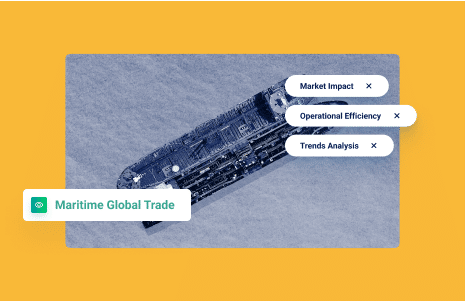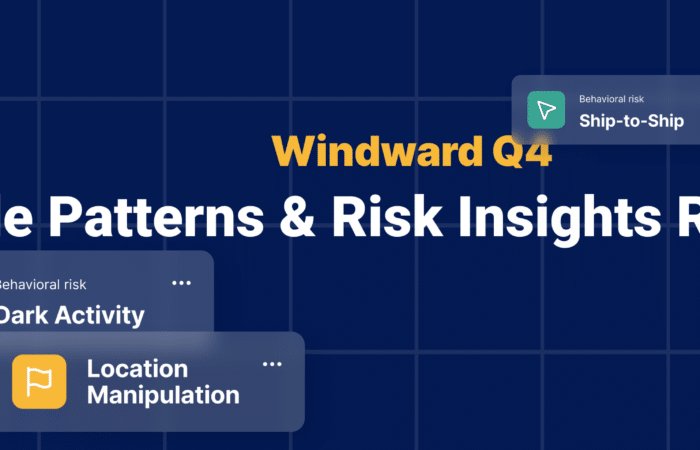What’s inside?
The “shadow fleet” (or alternatively “dark fleet”) phenomenon has drawn a great deal of attention from the mainstream media since the outbreak of Russia’s invasion of Ukraine, so we wrote a report (together with our partner, Vortexa) to help define previously ambiguous terms and help you stay ahead.
This blog post, which is based on some parts of that comprehensive report, shines a light on Russia’s shadow fleet. It breaks down the different tiers to further understand exactly what this new phenomenon is all about.
A Shifting Landscape
The shadow/dark fleet is popularly estimated to number around 600 vessels, with mysterious ownership designed to obscure their transport of sanctioned Russian oil/wet cargo since the start of the Russian war.
Windward’s comprehensive one-year report on the impact of Russia’s war offers useful background on the West’s oil ban and price cap regulations. As with previously sanctioned regimes, it quickly became apparent that some actors would work diligently to circumvent the West’s efforts to constrain Russia – as we saw in the case of the Nobel vessel, which made news relatively recently.
Russia and affiliated organizations adopted several of the deceptive shipping practices used by other sanctioned regimes, such as Iran and Venezuela. This resulted in many vessels that were previously uninvolved in smuggling getting flagged.
The price cap, with its different tiers, has influenced the types of deceptive shipping practices (DSPs) that began to occur more frequently. As buyers changed, with a major shift from Europe to India, China, and Turkey, the makeup of the required fleet to transfer Russian crude was also altered.
To distinguish between the different types of vessels and activities now occurring, many within the maritime industry have started to use the terms “dark fleet” or “shadow fleet” (often interchangeably). Yet, these definitions are vague, because sources usually only offer generic or vague definitions.
The Impact on the Commercial Market
Pre-war, the world was used to clear definitions of vessels: ships engaged in illicit activities/sanctioned ships, and law-abiding vessels. The Iranian and Venezuela-related “shadow fleets” were relatively small and did not significantly impact non-sanctioned trade.
With the emergence of regulations and the price cap on Russian crude oil and oil products, three groups are now competing for charterers’ deals. Not all of them would be relevant to all charterers and all deals.
This market reorganization impacts the commercial market in three ways:
- Supply and demand: when positioning vessels for future trade (next month +), traders and operators take into consideration the expected supply and demand balance.
- Local deals: while competing for a specific deal, operators consider competing vessels, which impacts pricing and negotiation.
- Compliance fears: traders and operators remain worried about inadvertently trading with a sanctioned vessel or organization.
Viewing the current Russian maritime landscape through the prism of a tiered system, and detailing these tiers and their sub-categories, will offer organizations a framework to clear legitimate business deals faster, facilitating global trade, while not unintentionally supporting Russia’s invasion.
The Three Tiers
Cleared Fleet
These are tankers not exhibiting any suspicious static conduct, such as flag hopping or irregular ownership structure. Behaviorally, these vessels do not indicate any participation in deceptive shipping practices, such as going dark for periods of time that might suggest involvement in a commodity trade. An additional indication of this fleet’s legitimacy is the areas in which they operate and the level of regulation of the ports and terminals they frequently call.
Gray Fleet
The oil ban and price cap imposed on Russian oil have led to a major shift in the oil supply chain. The most notable of these changes is the identity of Russian crude and oil product importers. Excluding the countries that ban the import of Russian oil – including the U.S., UK, EU, Australia, and Japan – and the decline of Russian oil prices, has led to the emergence of other buyers. Countries such as China, India, and Turkey, have significantly increased their trade with Russia. This has led to the creation of a quasi-legal fleet working in parallel with the cleared fleet to carry out this trade.
Windward’s Maritime AI™ utilizes a variety of behavioral and ownership-related indicators. These indicators include, but are not limited to, port calls, ship-to-ship operations, ownership and identity changes, first-time visits, and more. We cover new areas of operation and ship-to-ship hubs along the way to the cargo’s final destination, enabling us to identify not only the vessels loading the oil in Russian terminals, but also other vessels further down the supply chain.
Dark Fleet
These are the tankers carrying out clandestine trade of sanctioned commodities, using diverse methods of obfuscating their origins. This fleet utilizes various DSPs, including static and dynamic methodologies. These include dark activities, GNSS manipulation, and many more DSPs.
The fleet is characterized by weak ownership structures and the use of multiple flags of convenience over short periods of time. The size of this fleet has fluctuated substantially with each new regulation published and even more so following the Russian oil ban and price caps.
The Importance of a Tiered System & Maritime AI™ in Combating Russia’s Shadow Fleet
The emergence of Russia’s shadow fleet has had a significant impact on the maritime industry. The use of deceptive shipping practices has made it difficult to distinguish between legitimate vessels and those engaged in clandestine trade. With the creation of a tiered system, it is possible to gain a clearer understanding of the different types of vessels and activities now occurring. This knowledge is crucial for organizations to clear legitimate business deals faster, facilitating global trade while avoiding unintentional support for Russia’s invasion. The use of innovative technology such as Maritime AI™ can provide a useful tool to monitor and identify suspicious vessels, promoting compliance with regulations and ensuring safe and lawful trade in the maritime industry.
Our comprehensive report goes deeper, detailing:
- Oil trade flow trends related to Russia sanctions and the price cap
- Destinations for Russian oil from dark and gray fleets
- Top five origin ports for Russian oil from dark and gray fleets



